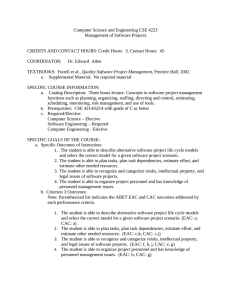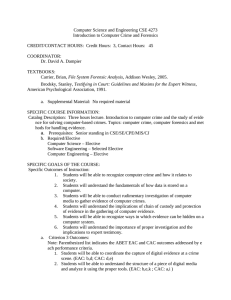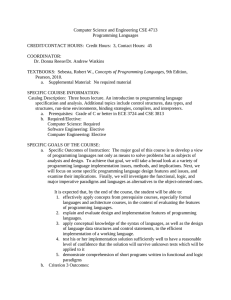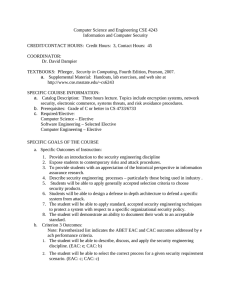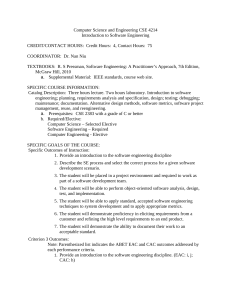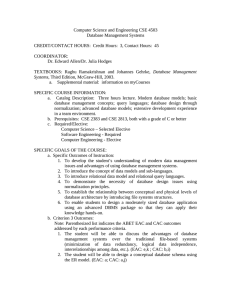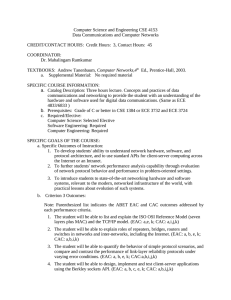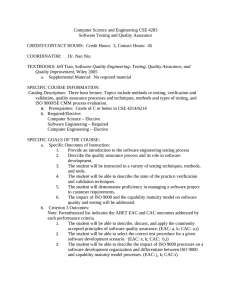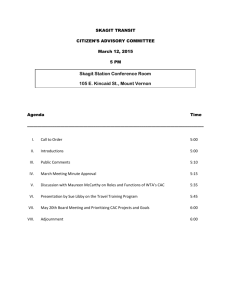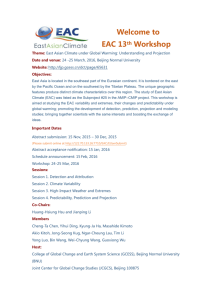Computer Science and Engineering CSE 4233 Software Architecture and Design
advertisement
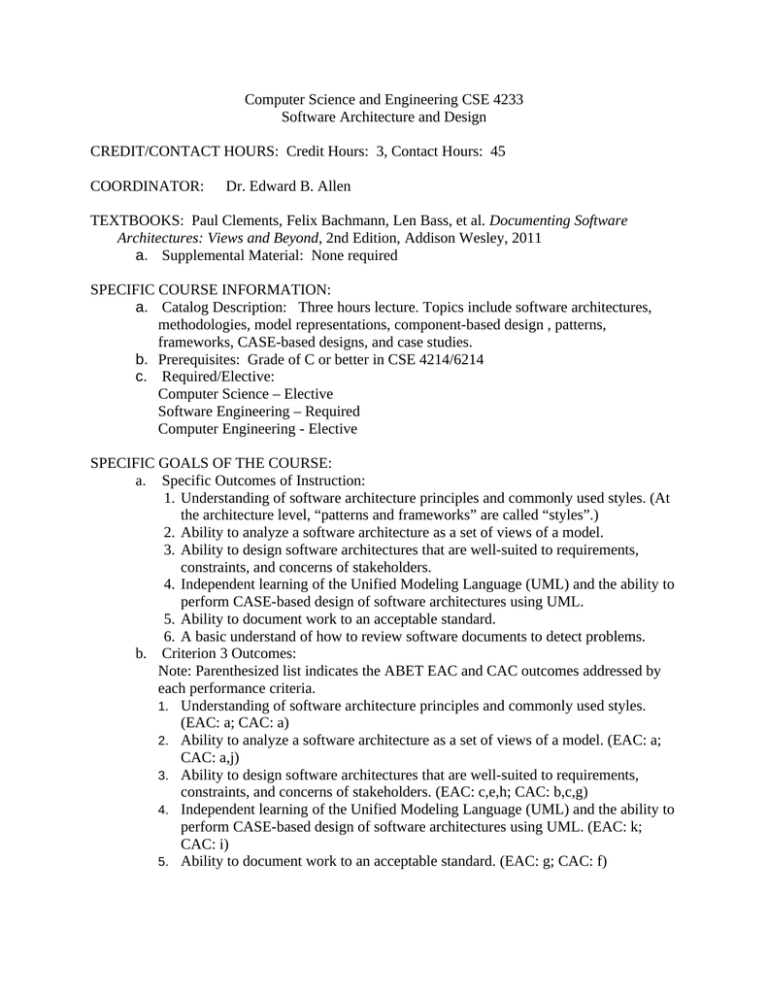
Computer Science and Engineering CSE 4233 Software Architecture and Design CREDIT/CONTACT HOURS: Credit Hours: 3, Contact Hours: 45 COORDINATOR: Dr. Edward B. Allen TEXTBOOKS: Paul Clements, Felix Bachmann, Len Bass, et al. Documenting Software Architectures: Views and Beyond, 2nd Edition, Addison Wesley, 2011 a. Supplemental Material: None required SPECIFIC COURSE INFORMATION: a. Catalog Description: Three hours lecture. Topics include software architectures, methodologies, model representations, component-based design , patterns, frameworks, CASE-based designs, and case studies. b. Prerequisites: Grade of C or better in CSE 4214/6214 c. Required/Elective: Computer Science – Elective Software Engineering – Required Computer Engineering - Elective SPECIFIC GOALS OF THE COURSE: a. Specific Outcomes of Instruction: 1. Understanding of software architecture principles and commonly used styles. (At the architecture level, “patterns and frameworks” are called “styles”.) 2. Ability to analyze a software architecture as a set of views of a model. 3. Ability to design software architectures that are well-suited to requirements, constraints, and concerns of stakeholders. 4. Independent learning of the Unified Modeling Language (UML) and the ability to perform CASE-based design of software architectures using UML. 5. Ability to document work to an acceptable standard. 6. A basic understand of how to review software documents to detect problems. b. Criterion 3 Outcomes: Note: Parenthesized list indicates the ABET EAC and CAC outcomes addressed by each performance criteria. 1. Understanding of software architecture principles and commonly used styles. (EAC: a; CAC: a) 2. Ability to analyze a software architecture as a set of views of a model. (EAC: a; CAC: a,j) 3. Ability to design software architectures that are well-suited to requirements, constraints, and concerns of stakeholders. (EAC: c,e,h; CAC: b,c,g) 4. Independent learning of the Unified Modeling Language (UML) and the ability to perform CASE-based design of software architectures using UML. (EAC: k; CAC: i) 5. Ability to document work to an acceptable standard. (EAC: g; CAC: f) 6. A basic understand of how to review software documents to detect problems. (EAC: k; CAC: i) TOPICS COVERED: 1. What is “software architecture” 2. Views of architectures 3. What is an “architecture description” 4. Architecture methodology 5. Unified Modeling Language (UML) overview 6. Inspection of software architectures 7. Module Viewtypes 8. Component-and-connector Viewtypes 9. Allocation Viewtypes 10. Process control styles 11. Advanced topics 12. Tests and review (Number of class hrs) 3 4 4 4 2 3 4 6 3 3 5 4
